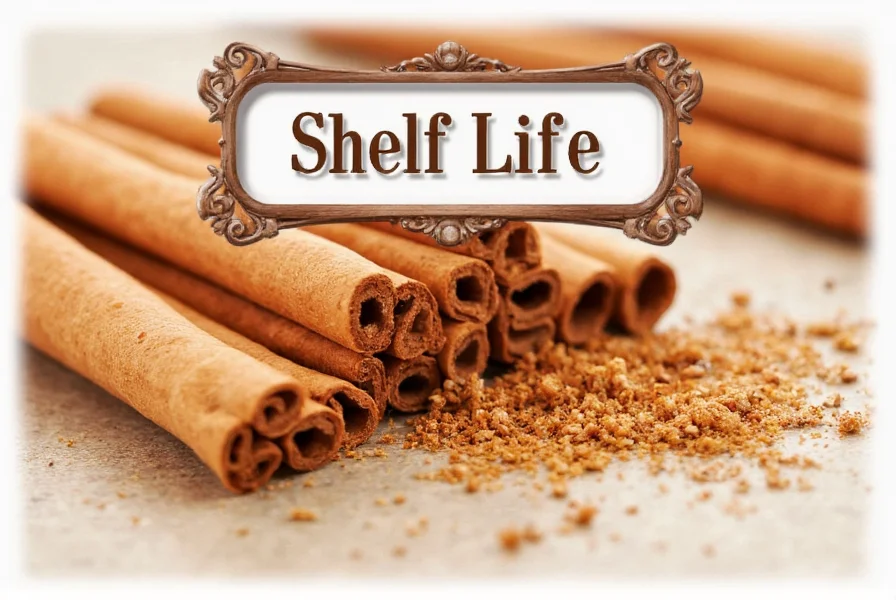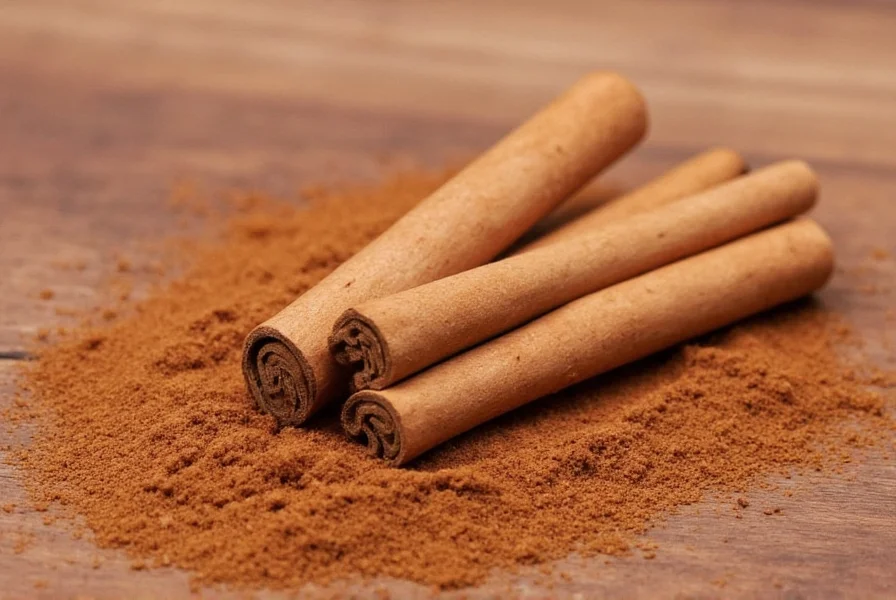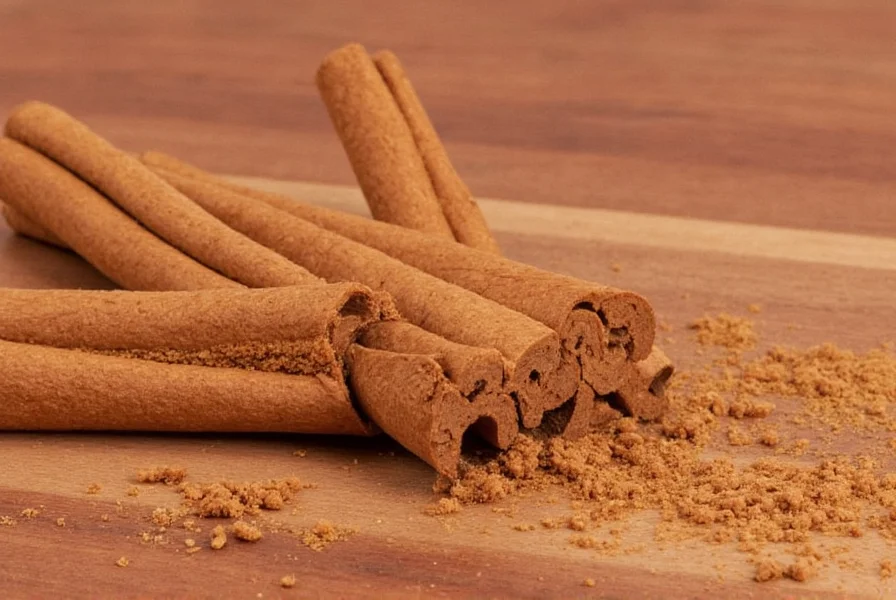Many home cooks and bakers wonder about the shelf life of their spice collection, particularly common staples like cinnamon. Unlike perishable foods, spices don't spoil in a way that makes them dangerous to consume, but they do undergo significant quality changes over time. Understanding cinnamon's shelf life helps ensure your recipes deliver the best possible flavor.
Understanding Cinnamon's Shelf Life
Cinnamon, whether in ground form or as whole sticks, doesn't have a true expiration date that indicates safety concerns. Instead, it experiences a gradual decline in quality. The essential oils responsible for cinnamon's distinctive aroma and flavor slowly evaporate, resulting in diminished potency. This process happens more quickly with ground cinnamon because of its larger surface area exposed to air.
Ground Cinnamon vs. Cinnamon Sticks
There's a significant difference in shelf life between the two common forms of cinnamon:
| Cinnamon Type | Pantry Shelf Life | Optimal Flavor Period | Maximum Usable Life |
|---|---|---|---|
| Ground Cinnamon | 1-2 years | 6-12 months | 2-3 years |
| Cinnamon Sticks | 3-4 years | 2-3 years | 4-5 years |
As shown in the table above, cinnamon sticks maintain their quality significantly longer than ground cinnamon. This is because the essential oils remain better preserved in the whole form. When you grind cinnamon sticks yourself just before use, you'll experience noticeably stronger flavor compared to pre-ground cinnamon that's been sitting on the shelf.
How to Tell If Your Cinnamon Has Lost Potency
Unlike spoiled food, expired cinnamon won't make you sick, but it won't deliver the flavor punch your recipes need. Here's how to assess your cinnamon's quality:
Visual Inspection
Fresh ground cinnamon should have a rich, reddish-brown color. If it appears faded or significantly lighter, it's likely lost much of its potency. For cinnamon sticks, check for any mold growth (extremely rare with properly stored spices) or excessive crumbling.
The Smell Test
This is the most reliable indicator. Fresh cinnamon has a strong, sweet, and distinctly warm aroma. Open your container and take a deep sniff. If you struggle to detect the characteristic cinnamon scent or it smells only faintly aromatic, the spice has lost much of its essential oils. Properly stored cinnamon should immediately fill your nose with its signature fragrance.

Taste Test
For a definitive assessment, perform a small taste test. Place a tiny amount on your tongue. Fresh cinnamon delivers an immediate warm, sweet sensation followed by slight heat. If the flavor is muted, one-dimensional, or barely detectable, it's time to replace your supply. Remember that even expired cinnamon remains safe to eat—it just won't enhance your dishes as intended.
Maximizing Cinnamon's Shelf Life
Proper storage dramatically extends cinnamon's useful life. Follow these guidelines to maintain optimal flavor:
- Air-tight containers: Transfer cinnamon from flimsy store packaging to glass or metal containers with tight-fitting lids
- Cool, dark location: Store away from heat sources, sunlight, and moisture (never above the stove)
- Avoid temperature fluctuations: Don't store in the refrigerator where condensation can occur
- Buy in smaller quantities: Purchase only what you'll use within 6-12 months for best flavor
- Consider whole sticks: Buy cinnamon sticks and grind them as needed for maximum freshness

Safety Considerations with Old Cinnamon
Many people worry whether expired cinnamon can make them sick. The good news is that properly stored cinnamon remains safe indefinitely. Spices lack the moisture content needed for bacterial growth. However, there are some important considerations:
If your cinnamon has been exposed to moisture, developed mold, or shows signs of insect infestation, discard it immediately. These contamination issues are rare with commercially packaged spices but can occur with improper home storage. Always inspect older spices for these signs before use.
When to Replace Your Cinnamon
While expired cinnamon won't harm you, using low-potency cinnamon can ruin carefully crafted recipes. Consider replacing your supply when:
- You can't detect a strong aroma when opening the container
- Recipes that previously had prominent cinnamon flavor now taste bland
- Ground cinnamon has been stored for more than 2 years
- Cinnamon sticks have been stored for more than 4 years
- You notice significant color fading
For baking and recipes where cinnamon is a featured ingredient, using fresh, potent cinnamon makes a dramatic difference in final flavor. Savory dishes that use cinnamon as a background note may still work with older spice, though the complexity will be reduced.
Reviving Slightly Old Cinnamon
If your cinnamon has lost some potency but isn't completely flavorless, try these techniques to maximize what remains:
- Toast ground cinnamon in a dry pan for 30-60 seconds to release remaining oils
- Store cinnamon sticks in sugar to create flavored sugar while refreshing the spice
- Use slightly larger quantities in recipes (though this has diminishing returns)
- Crush older cinnamon sticks before grinding for better extraction
These methods can extend the usable life of cinnamon that's beginning to fade but won't restore fully depleted spice to its original quality.
Does Cinnamon Expire: The Final Verdict
To answer the original question directly: cinnamon doesn't expire in the sense of becoming unsafe to eat, but it does lose its characteristic flavor and aroma over time. Understanding how long does cinnamon last and recognizing signs cinnamon has expired helps ensure your culinary creations deliver their intended flavor profile. Proper storage of ground cinnamon expiration date considerations versus cinnamon sticks shelf life differences allows you to maximize your spice investment while maintaining recipe integrity.











 浙公网安备
33010002000092号
浙公网安备
33010002000092号 浙B2-20120091-4
浙B2-20120091-4